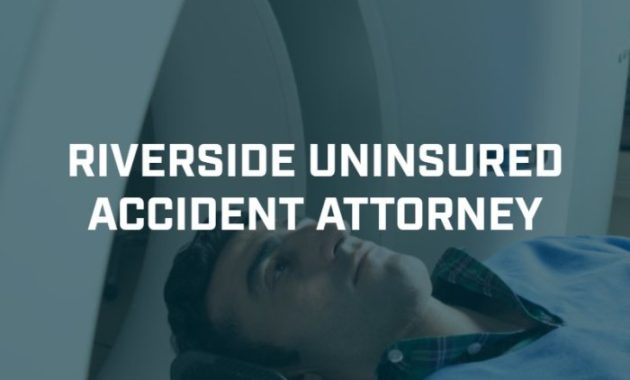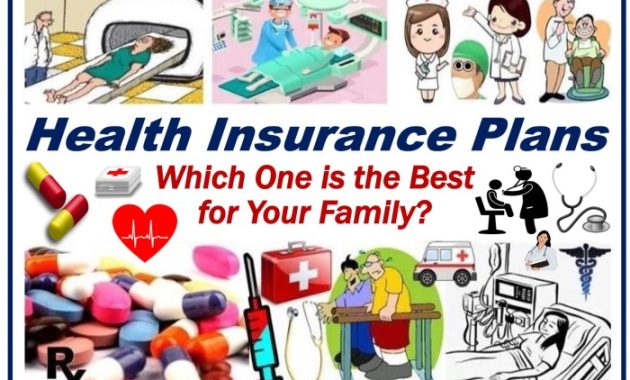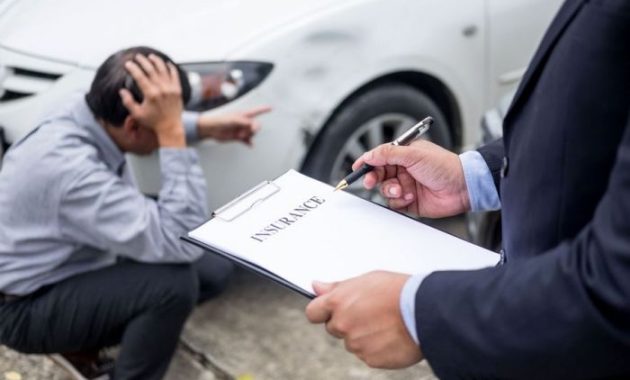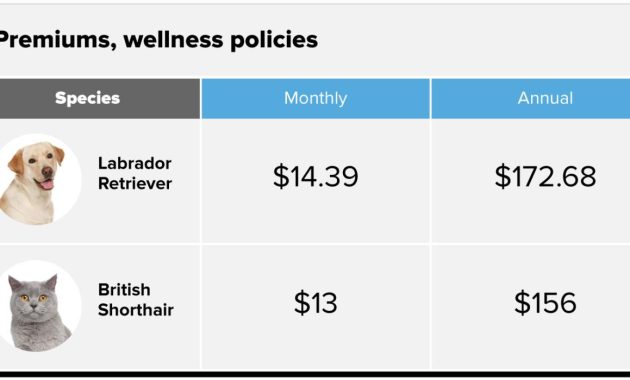Understanding the Legal Landscape for Uninsured Motorist Claims
Lawyer for car accident no insurance – Yo, so you got rear-ended by some dude who bounced without insurance? Total bummer, right? But don’t sweat it, knowing your rights is half the battle. This ain’t some choose-your-own-adventure game; understanding uninsured and underinsured motorist coverage is key to getting your ride fixed and your life back on track.Uninsured and underinsured motorist coverage are both designed to protect you if you’re hit by someone without enough, or any, insurance.
The big difference? Uninsured motorist coverage kicks in when the other driver has
zero* insurance. Underinsured motorist coverage steps up when the other driver’s insurance isn’t enough to cover your medical bills and car repairs. Think of it like this
uninsured is for the total deadbeats, underinsured is for the peeps who are kinda-sorta covered but not nearly enough.
Filing a Claim Against an Uninsured Driver
First things first: Get the deets. This means gathering all the info you can from the accident scene – police report, photos of the damage, contact info for witnesses. Then, file a claim withyour* insurance company. They’ll handle the paperwork and negotiate with the at-fault driver’s insurance company (even if there isn’t one). Your own policy is your safety net here.
They’ll likely investigate the accident to determine fault. Be prepared to provide all the documentation you collected. This is where being organized pays off, seriously.
So, you got rear-ended and the other driver’s a total space cadet with no insurance? Dude, that totally sucks. Finding a lawyer for car accident no insurance situations is crucial, and you need someone who knows the ropes. Check out this awesome resource on finding a car accident without insurance lawyer to get the ball rolling.
Seriously, getting legal help is your best bet to get compensated for your wrecked ride and medical bills. Don’t go it alone – get that lawyer for car accident no insurance ASAP!
Initiating a Lawsuit Against an Uninsured Driver
If your insurance company can’t reach a settlement or if the other driver’s insurance coverage is insufficient, you might need to sue the uninsured driver directly. This involves filing a lawsuit in civil court. You’ll need to consult with a lawyer to navigate the legal process. They’ll help you file the necessary paperwork, which usually includes a complaint outlining the accident, your injuries, and the damages you’ve suffered.
The process can take time, possibly even years depending on court backlogs and the complexity of the case. You’ll need to gather and present evidence to support your claim, which includes medical records, repair estimates, lost wage documentation, and more. The court process will likely involve discovery (exchanging information with the other party), depositions (giving sworn testimony), and potentially a trial.
Again, a lawyer is your best friend here.
Common Legal Defenses Used by Uninsured Drivers and Strategies to Counter Them
Uninsured drivers often try to wiggle out of responsibility. Common defenses include claiming you were at fault, arguing your injuries aren’t as severe as you claim, or even denying the accident happened altogether. To counter these defenses, solid evidence is your ace in the hole. This means thorough documentation from the accident scene, medical records, witness statements, and photos/videos of the damage.
A strong lawyer can also help you poke holes in the other driver’s defense. They’ll be able to anticipate these tactics and prepare a counter-strategy. Remember, their job is to fight for you and get you the compensation you deserve. Don’t underestimate the power of a good lawyer.
Locating and Evaluating Legal Representation
Yo, so you’ve been in a car wreck, no insurance on the other guy? That’s a total bummer, but don’t sweat it. Finding the right lawyer is key to getting what you deserve. This section breaks down how to find a legal ace who’ll fight for you.Choosing the right lawyer is like picking the perfect beat for your song – it’s gotta be a good fit.
You need someone who understands uninsured motorist claims and has a proven track record. Don’t just grab the first name you see; do your homework.
Lawyer Selection Checklist
Before you even think about picking up the phone, use this checklist to make sure you’re choosing a lawyer who’s got your back:
- Experience: How many uninsured motorist cases have they handled? Look for lawyers who specialize in this area.
- Success Rate: What’s their track record? A high success rate shows they know what they’re doing.
- Fees: Understand their fee structure – hourly, contingency, or a hybrid? (We’ll cover this in detail below).
- Communication: How responsive are they? Do they keep clients informed?
- References: Ask for references from past clients. Get the inside scoop.
- Location & Accessibility: Is their office conveniently located? Do they offer virtual consultations?
Lawyer Fee Structures Comparison
Different lawyers charge differently. Here’s a breakdown of common fee structures:
| Fee Structure | How it Works | Pros | Cons |
|---|---|---|---|
| Hourly Rate | You pay by the hour for their services. | Transparent costs, good for smaller cases. | Can get expensive quickly for complex cases. |
| Contingency Fee | You only pay if they win your case. They take a percentage of the settlement or judgment. | No upfront costs, lawyer is incentivized to win. | You might get a smaller payout than if you paid hourly. |
| Hybrid Fee | A combination of hourly and contingency fees. | Balances transparency with incentive for the lawyer. | Can be complex to understand upfront. |
| Retainer Fee | An upfront payment to secure their services. | Ensures availability of lawyer’s time. | Requires significant upfront investment. |
Verifying Lawyer Experience and Success Rate
Don’t just take a lawyer’s word for it. Do some digging! Check online reviews, look at their website for case results (if they share them), and consider asking for specific examples of similar cases they’ve won. A lawyer with a solid track record in uninsured motorist claims is worth their weight in gold.
Key Questions to Ask Potential Lawyers
Before committing, ask these questions:
- What’s your experience with uninsured motorist claims? This shows you’re serious about their expertise.
- What’s your success rate in these types of cases? Numbers don’t lie.
- How will you handle my case? Get a clear picture of their strategy.
- What are your fees and how are they structured? Transparency is key.
- What is your communication style and how often will I hear from you? Staying in the loop is important.
- Can you provide references from past clients? Get those testimonials!
Gathering Evidence and Building a Strong Case

Yo, so you got hit by an uninsured driver? That totally sucks, but don’t sweat it. Building a solid case is key to getting compensated for your damages. This means gathering all the evidence you can get your hands on – the more, the merrier! Think of it like assembling the ultimate mixtape of proof.This section breaks down how to collect the right evidence, deal with insurance adjusters (if any are involved), and keep everything organized.
It’s all about showing the other driver was at fault and that you deserve to be made whole.
Essential Evidence After an Accident
Gathering the right evidence is crucial for a successful claim. Failing to do so can seriously weaken your case, so don’t be lazy! This evidence proves what happened and the extent of your injuries and losses. Think of it as your legal arsenal.
- Police Report: This official document is a cornerstone of your case. It records the accident details, including who was at fault (hopefully, not you!).
- Photos and Videos: Visual evidence is gold. Snap pics of the damage to your car, the accident scene, and any visible injuries. Videos are even better, showing the whole situation.
- Medical Records: Document your injuries thoroughly. Get copies of all medical bills, doctor’s notes, therapy records, and any other relevant healthcare documentation. This proves the extent of your injuries and related expenses.
- Witness Statements: If anyone saw the accident, get their contact info and a written statement describing what they saw. Eyewitness accounts add significant weight to your claim.
- Repair Estimates: Get at least two estimates for car repairs from reputable mechanics. This quantifies the damage to your vehicle.
- Lost Wage Documentation: If the accident prevented you from working, gather pay stubs, employer statements, and tax returns to show your lost income.
Obtaining Necessary Documentation
Getting this stuff together might seem like a hassle, but it’s vital. The sooner you get it, the better. Police Reports: Contact the police department that responded to the accident. They’ll usually have an online portal or you can request a copy in person. Be prepared to provide the date, time, and location of the accident.
Medical Records: Request copies of your medical records from your doctors, hospitals, and therapists. Most healthcare providers have a process for releasing medical records – it may involve filling out a form and paying a small fee. Witness Statements: Reach out to witnesses as soon as possible. Provide them with a simple form to fill out describing what they saw.
The more details the better, including dates, times, and descriptions of the vehicles involved.
Organizing Evidence
Keeping everything straight is important, especially when you’re dealing with stress and possible injuries. A well-organized system makes things much easier for you and your lawyer.Create a dedicated folder (physical or digital) for all your accident-related documents. You can use subfolders to categorize things (e.g., “Medical Records,” “Police Reports,” “Photos”). Label everything clearly and keep track of where everything is.
Consider using a spreadsheet or database to create a detailed inventory of your evidence. This helps you keep track of everything and makes it easier for your lawyer to access it when needed. This organized approach ensures nothing gets lost and streamlines the legal process.
Strategies for Dealing with Insurance Adjusters
Dealing with insurance adjusters can be tricky. They’re there to protect the insurance company’s interests, not necessarily yours. Remember, they’re not your friend.
Don’t give a recorded statement without consulting your lawyer first.
Be polite but firm. Provide only the information requested and don’t volunteer extra details. Keep detailed records of all communication with the adjuster, including dates, times, and summaries of conversations. If they offer a settlement, don’t accept it without reviewing it with your attorney. Remember, they’re looking to settle for the lowest amount possible.
Your lawyer will fight for your rights and help you get the compensation you deserve.
Negotiating a Settlement or Preparing for Trial
Yo, so you’ve got a car accident case, no insurance on the other guy’s side? That’s a serious bummer, but your lawyer’s got your back. Now it’s time to talk about getting some serious dough or fighting it out in court. This part’s all about strategy and making sure you get what you deserve.Negotiations are like a high-stakes poker game.
Your lawyer’s gonna use their skills to get the best deal possible from the insurance company (or the at-fault driver if they’re uninsured). Sometimes, it’s a straight-up battle of wills, other times it’s more about finding common ground. Either way, it’s all about leveraging the evidence you’ve gathered and showing the other side what you’re working with.
Negotiation Tactics in Uninsured Motorist Cases
Lawyers use a bunch of different tactics to get the best settlement. One common one is to emphasize the strength of your case – that means highlighting the evidence that proves the other driver was at fault and the extent of your injuries and losses. They might also point out the potential costs of a trial, which can be a huge deterrent for the other side.
Sometimes, they’ll use a “good cop/bad cop” routine, with one lawyer being super aggressive and another being more reasonable. They might even throw in some “what-if” scenarios, painting a picture of what could happen if the case goes to trial – and it ain’t pretty for the other side. The goal is always to get the other party to see the value of a settlement that’s fair to you.
Think of it as a negotiation dance; your lawyer’s leading the way.
Preparing for Trial
If a settlement isn’t reached, it’s time to prep for the big show – trial! This involves a whole lot of work. First, your lawyer will prep your witnesses. This means going over their testimony, making sure they understand the importance of being truthful and clear, and practicing their answers to potential questions from the opposing lawyer. Then, they’ll organize all the evidence – medical records, police reports, photos of the accident scene, witness statements – and make sure it’s all ready to be presented to the judge or jury.
They’ll also create a trial strategy, outlining the arguments they’ll make and the evidence they’ll use to support them. It’s like building a case from the ground up, and your lawyer is the architect.
Settlement vs. Trial: Weighing the Pros and Cons
Settling your case avoids the stress and uncertainty of a trial. It’s faster and cheaper, and you get your money sooner. However, you might not get the full amount you deserve. Going to trial gives you the chance to present your case fully and potentially win a larger award, but it’s risky, expensive, and takes a lot of time.
It’s like choosing between a sure thing and a shot at the jackpot. Your lawyer will help you weigh the pros and cons and decide which path is best for your specific situation. They’ll consider the strength of your case, the potential damages, and your personal preferences.
Potential Trial Timeline
Preparing for trial takes time. Here’s a general idea of what the process might look like:
- Discovery Phase (Months 1-6): Gathering evidence, deposing witnesses, exchanging information with the other side.
- Motion Practice (Months 6-9): Filing and responding to motions related to evidence or procedure.
- Trial Preparation (Months 9-12): Witness preparation, evidence organization, strategy development.
- Trial (Month 12+): The actual trial, which can last from a few days to several weeks.
- Post-Trial (Month 12+): Dealing with any post-trial motions or appeals.
Remember, this is just a general timeline. The actual timeline for your case will depend on a number of factors, including the complexity of the case and the court’s schedule. But your lawyer will keep you updated every step of the way.
Understanding Potential Damages and Compensation
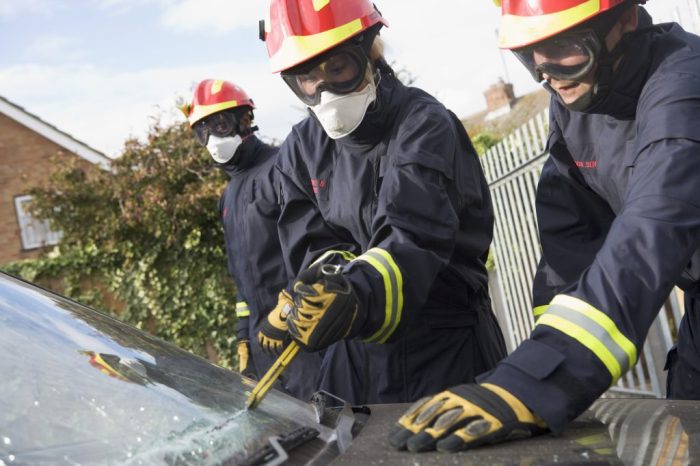
Yo, so you got hit by a car, and the driver didn’t have insurance? That totally sucks, but let’s break down how you can get compensated for your losses. Winning your case means understanding what you can claim, and how much it’s all worth.Getting the cash you deserve after a car accident without insurance involves knowing what kinds of damages you can claim.
Basically, you’re looking to get back to where you werebefore* the accident happened, as much as possible. This includes the costs and the pain.
Types of Recoverable Damages
Uninsured motorist claims can cover a whole range of damages. Think of it like this: the insurance company (yours, in this case, since the other driver is uninsured) needs to make you “whole” again. This means covering all your expenses and losses directly resulting from the accident.
- Medical Bills: This is pretty straightforward – all your doctor visits, hospital stays, physical therapy, medications, and any other medical expenses related to the accident are covered. Keep every single receipt!
- Lost Wages: If you missed work because of your injuries, you can claim the money you lost. This includes your regular salary, bonuses, and any other income you missed. You’ll need pay stubs or other proof of income to back this up.
- Pain and Suffering: This is where things get a little less black and white. This covers the physical pain, emotional distress, and mental anguish you experienced due to the accident. It’s harder to put a dollar amount on this, but it’s a legitimate part of your claim. Think about sleepless nights, emotional trauma, and the overall impact on your life.
Examples of Settlements and Awards
Let’s get real – numbers talk. While every case is unique, seeing what others have gotten can give you a better idea of what your claim might be worth. For example, a person with significant injuries, like a broken leg and a concussion, resulting in extensive medical bills and lost wages, might settle for $50,000 to $100,000 or more, depending on the specifics.
A case involving serious injuries and long-term disability could result in a much larger settlement or jury award, even reaching into the hundreds of thousands or millions. These are just examples, and your case will depend on your specific circumstances.
Factors Influencing Claim Value
Several things determine how much your claim is worth. Your lawyer will consider all these factors when building your case.
- Severity of Injuries: The more severe your injuries, the higher the potential compensation. A broken arm is different from a traumatic brain injury.
- Amount of Medical Bills: The more you spend on medical care, the more you can claim.
- Lost Wages: The longer you’re out of work, the more money you’re owed.
- Pain and Suffering: The level of your pain and suffering directly impacts the value of your claim. This is often subjective and requires a strong case built around medical documentation and personal testimony.
- Liability: Who was at fault? If the other driver was clearly at fault, your claim is stronger.
Calculating Lost Wages and Future Medical Expenses
Figuring out how much you’ve lost and will lose in the future is crucial. For lost wages, your lawyer will use your pay stubs, tax returns, and other documentation to calculate your past and future lost income. For future medical expenses, they’ll use your medical records and expert opinions to estimate what you’ll need to spend on ongoing care, therapy, or medication.
This often involves obtaining projections from medical professionals who can testify about the long-term impact of your injuries. Think of it like a detailed budget for your recovery. They might even use a life-care plan, which is a detailed document outlining your future medical and rehabilitation needs. It’s like a roadmap for your healing, and it helps determine the cost of your recovery.
Illustrative Case Study: Lawyer For Car Accident No Insurance
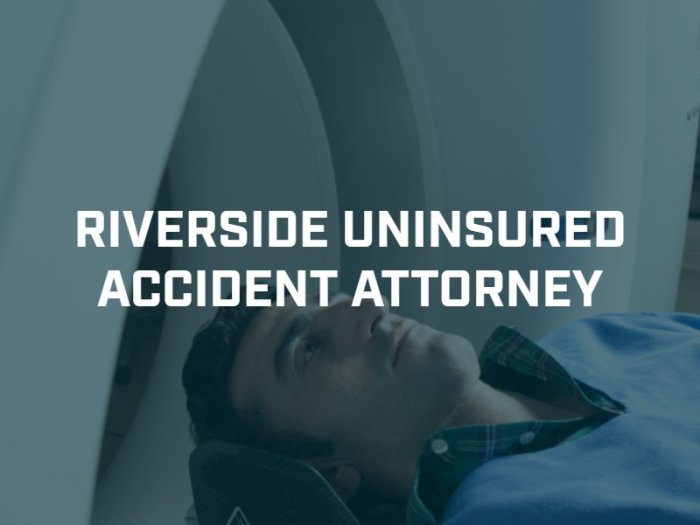
This case study details the legal battle faced by Maria Rodriguez after a devastating car accident involving an uninsured driver. It highlights the challenges of pursuing justice when the at-fault driver lacks insurance, emphasizing the importance of strong legal representation and meticulous evidence gathering.
Accident and Injuries
On a rainy Tuesday afternoon, Maria was stopped at a red light when a speeding pickup truck, driven by an uninsured individual named John Smith, rear-ended her compact car. The impact was significant, causing Maria’s car to spin violently before coming to rest against a light pole. Maria sustained a whiplash injury, a concussion, and several deep lacerations requiring extensive medical treatment.
The accident left her with persistent headaches, chronic neck pain, and significant emotional trauma. The damage to her car was totaled. Police arrived at the scene and documented the accident, noting Mr. Smith’s lack of insurance. Mr.
Smith admitted fault at the scene.
Legal Proceedings and Evidence
Maria retained a personal injury lawyer specializing in uninsured motorist claims. The lawyer immediately began gathering evidence, including the police report, photographs of the accident scene and damaged vehicles, Maria’s medical records, and witness statements from individuals who saw the accident. The lawyer also obtained an independent medical examination to confirm the extent of Maria’s injuries and their long-term impact.
A crucial piece of evidence was a dashcam video from a nearby vehicle that clearly showed Mr. Smith running the red light.
Legal Arguments and Challenges, Lawyer for car accident no insurance
The lawyer’s strategy focused on proving Mr. Smith’s negligence and the extent of Maria’s damages. The case was complicated by Mr. Smith’s lack of assets and the absence of an insurance company to negotiate with. The lawyer argued that Mr.
Smith’s reckless driving directly caused Maria’s injuries and that she was entitled to compensation for her medical expenses, lost wages, pain and suffering, and property damage. A key challenge was demonstrating the long-term effects of Maria’s injuries, particularly the chronic pain and emotional distress, which were not immediately apparent. The lawyer successfully presented expert testimony from medical professionals to support these claims.
“The evidence overwhelmingly demonstrates Mr. Smith’s negligence and the significant harm inflicted upon Ms. Rodriguez,”
the lawyer stated during closing arguments.
Settlement and Outcome
After months of negotiations and preparation for trial, a settlement was reached. While Mr. Smith had limited personal assets, the lawyer successfully pursued a judgment against him, which included a lien on his property. Additionally, Maria’s uninsured motorist coverage, a policy she fortunately held, helped to compensate her for the majority of her damages. The settlement covered Maria’s medical bills, lost wages, and a significant amount for pain and suffering.
Although the process was lengthy and emotionally taxing, the settlement provided Maria with the financial resources necessary to continue her recovery.
Emotional Impact
The accident and subsequent legal proceedings had a profound emotional impact on Maria. The initial shock and pain were compounded by the stress of dealing with insurance claims, medical appointments, and legal proceedings. The constant worry about financial burdens added to her anxiety.
“It was a really difficult time,”
Maria later recalled.
“I was scared, hurt, and worried about my future.”
However, with the support of her family, friends, and her lawyer, Maria was able to navigate the challenging legal process and ultimately find some measure of closure.

